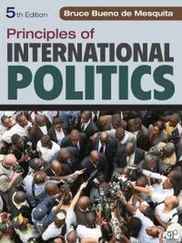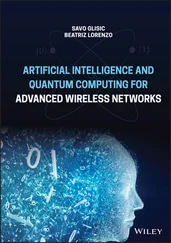Daniel D. Stancil - Principles of Superconducting Quantum Computers
Здесь есть возможность читать онлайн «Daniel D. Stancil - Principles of Superconducting Quantum Computers» — ознакомительный отрывок электронной книги совершенно бесплатно, а после прочтения отрывка купить полную версию. В некоторых случаях можно слушать аудио, скачать через торрент в формате fb2 и присутствует краткое содержание. Жанр: unrecognised, на английском языке. Описание произведения, (предисловие) а так же отзывы посетителей доступны на портале библиотеки ЛибКат.
- Название:Principles of Superconducting Quantum Computers
- Автор:
- Жанр:
- Год:неизвестен
- ISBN:нет данных
- Рейтинг книги:4 / 5. Голосов: 1
-
Избранное:Добавить в избранное
- Отзывы:
-
Ваша оценка:
- 80
- 1
- 2
- 3
- 4
- 5
Principles of Superconducting Quantum Computers: краткое содержание, описание и аннотация
Предлагаем к чтению аннотацию, описание, краткое содержание или предисловие (зависит от того, что написал сам автор книги «Principles of Superconducting Quantum Computers»). Если вы не нашли необходимую информацию о книге — напишите в комментариях, мы постараемся отыскать её.
Principles of Superconducting Quantum Computers
Principles of Superconducting Quantum Computers
Principles of Superconducting Quantum Computers — читать онлайн ознакомительный отрывок
Ниже представлен текст книги, разбитый по страницам. Система сохранения места последней прочитанной страницы, позволяет с удобством читать онлайн бесплатно книгу «Principles of Superconducting Quantum Computers», без необходимости каждый раз заново искать на чём Вы остановились. Поставьте закладку, и сможете в любой момент перейти на страницу, на которой закончили чтение.
Интервал:
Закладка:
If we simply used a copper coaxial cable to carry the signal from the room-temperature electronics into the refrigerator, we would have at least two significant problems. First, copper is a good conductor of heat as well as electricity, so the copper cable would convey heat from the upper stages to the lower stages, making it very difficult to reach the temperatures required at the lower stages. To address this, coaxial cables made of an alloy of copper and nickel are used instead. This alloy has very low thermal conductivity to assist with thermally isolating the stages, while having an acceptable electrical conductivity.
The second problem is that a cable coming straight from the outside environment would convey significant noise from the environment into the refrigerator. To combat this, attenuators are placed in the lower stages. These attenuators reduce noise power from the upper stages, but introduce their own noise proportional to their equilibrium temperature. Consequently at the lowest stage, the thermal noise is minimized by the very low temperature of the attenuator. Of course these attenuators also reduce the amplitude of the control signal, so we must make sure that the signal level produced by the signal source is strong enough to produce a satisfactory control signal at the quantum processor.
Returning to the signal reflected from the quantum processor, upon entering the center circulator, the energy is transferred to the bottom port and delivered to a Josephson Junction Parametric Amplifier (JPA). This is a quantum-limited amplifier, meaning that the noise it introduces to the circuit is close to the fundamental minimum allowed by quantum theory. The JPA works in reflection mode, so the amplified reflected signal is returned to the circulator and transferred to the final circulator at the bottom right.
The circulator at the bottom right is operated as an isolator . Power applied to the input (left port) is delivered to the output (top port), but any power reflected from impedance mismatches further down line, e.g., at the input of the HEMT amplifier, will be delivered to the matched load attached to the bottom port. In this way, the very sensitive quantum processor and quantum limited amplifier are isolated from reflected power or noise from the upper stages.
The measured signal at this point is very weak, and we definitely would not want to use a stack of attenuators on the output line! Instead, a coaxial cable made of an alloy of Niobium and Titanium (NbTi) is used to convey the signal to the 3 K stage. NbTi is a Type II superconductor with a transition temperature of about 10 K, so it provides an extremely low loss path to the 3 K stage. At the 3 K stage, there is a more conventional low-noise amplifier (LNA), but made using a high electron mobility transistor (HEMT)—a type of transistor that is known for producing very low noise. The signal from the output of the HEMT LNA is further amplified at room temperature before delivery to the signal processing electronics.
Returning to the control-signal electronics, any band-limited signal centered on the frequency ω can be represented by sine and cosine components:
 (1.70)
(1.70)
where I ( t ) and Q ( t ) are “in-phase” and “quadrature” functions whose time variations are slow compared with the period T=2π/ω. Digital samples of I and Q are converted to band-limited analog signals by digital-to-analog converters followed in general by low-pass filters to eliminate high-frequency components resulting from aliasing. The circular components in Figure 1.12 containing “×” are called mixers , and produce an output that is simply the product of the two input signals. For example, the bottom-most mixer produces Q(t)sinωt on its output. Similarly, the output of the next-to-bottom mixer is I(t)cosωt. The outputs of the two mixers are applied to a power combiner, shown as the square component with two terminals on the left, and one on the right. The output of the combiner is the sum of the two input signals, creating the desired general signal of the form given by Eq. ( 1.70). This circuit is referred to as an IQ modulator .
There are different ways of combining RF signals, but the particular one shown is known as a Wilkinson combiner, or Wilkinson divider. Note that this component is reciprocal, so it can be used either as a combiner or a divider. An attractive feature of the Wilkinson circuit when used as a divider is that if all of the ports are matched, it does not introduce any loss.
The output signal from the quantum processor is applied to a signal processing circuit at the top center of Figure 1.12 that is very similar to the IQ modulator used to generate the control signal. The signal is first split into equal parts using a Wilkinson divider, and the divided signals are multiplied by either cosωt or sinωt before being applied to low-pass filters. The effect of the low-pass filters is to integrate the applied signal, so since the cross term proportional to cosωtsinωt averages to zero, the filter outputs are proportional to either I ( t ) or Q ( t ). These signals are then digitized and analyzed by the classical computer.
With this high-level description as motivation, we are now ready to discuss in detail the principles that underlie the hardware and software of superconducting quantum computing.
Chapters 2and 3explore the quantum physics that determine the behavior of qubits and gates. This gives us the tools to understand the fundamentals of quantum states and how they can be manipulated.
Chapters 4– 8show how qubits are constructed from superconducting devices, how they are coupled to each other with microwave transmission lines, and how they are controlled and measured by external systems.
Chapters 9and 10discuss how imperfections in the systems we build affect the quantum information we are trying to process. In the near term, we need mechanisms to characterize and compensate for errors, while the long-term hope is that we will have a sufficient number of high-quality qubits to correct errors dynamically and sustain long-running, fault-tolerant quantum computations.
Finally, Chapters 11and 12describe the computations that can be accomplished using qubits and gates, and the potential for applications beyond the capabilities of classical computers.
Our hope is to lay a firm foundation for those new to the quantum computing field, whether students or practicing engineers, as a first step toward tackling the many research and engineering challenges that are needed to make large-scale quantum computers a reality.
Exercises
1.1 How many basis states are there for a three-qubit system? Show the vectors for the (computational) basis states.
1.2 There are four Bell states that can be created by entangling two qubits. In addition to the state shown in Figure 1.5, the three additional states are listed below. Construct a circuit for generating each state.12(|00⟩−|11⟩)12(|01⟩+|10⟩)12(|01⟩−|10⟩)
1.3 Prove the following equivalencies.HZH = XHXH = ZHYH=−YCNOT1,0=H⊗2CNOT0,1H⊗2 In (d), CNOTi,j means a CNOT with qubit i as the control and qubit j as the target. H⊗2 means a Hadamard gate applied to both qubits.
1.4 Create a quantum circuit that swaps two qubit states. In other words: |ab⟩ ↦ |ba⟩. Hint: Consider this classical algorithm that swaps two numbers x and y using an exclusive-OR (XOR) instruction.
1.5 Suppose we design a superconducting qubit where the energy difference between |0⟩ and |1⟩ is around 10 GHz. What is the temperature needed to minimize the effect of thermal energy on the qubit, assuming that the qubit is in thermal equilibrium with its environment?
Читать дальшеИнтервал:
Закладка:
Похожие книги на «Principles of Superconducting Quantum Computers»
Представляем Вашему вниманию похожие книги на «Principles of Superconducting Quantum Computers» списком для выбора. Мы отобрали схожую по названию и смыслу литературу в надежде предоставить читателям больше вариантов отыскать новые, интересные, ещё непрочитанные произведения.
Обсуждение, отзывы о книге «Principles of Superconducting Quantum Computers» и просто собственные мнения читателей. Оставьте ваши комментарии, напишите, что Вы думаете о произведении, его смысле или главных героях. Укажите что конкретно понравилось, а что нет, и почему Вы так считаете.
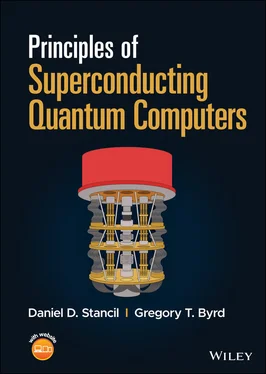
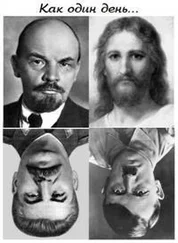

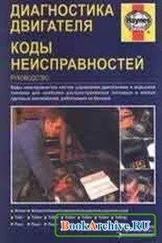

![Алексей Лавров - Quantum Ego [СИ]](/books/414972/aleksej-lavrov-quantum-ego-si-thumb.webp)
